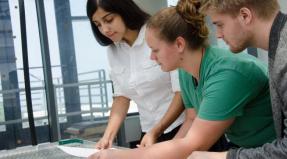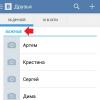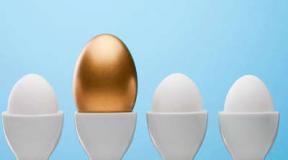Iodine release form instructions for use. Alcohol solution of iodine: instruction and application. Indications and dosage
Name:
Iodine (lodum)
Pharmacological
action:
Elemental iodine has pronounced antimicrobial properties... Elemental iodine preparations are characterized by a pronounced local irritating effect on tissues, and in high concentrations - a cauterizing effect. Local action due to the ability of elemental iodine to precipitate tissue proteins. Preparations that split off elemental iodine have a much less pronounced irritant effect, and iodides have local irritating properties only in very high concentrations.
The nature of the resorptive action preparations of elemental iodine and iodides are the same. The most pronounced effect in the resorptive action of iodine preparations have on the functions thyroid gland. With iodine deficiency iodides help to restore the disturbed synthesis of thyroid hormones. With a normal iodine content in the environment, iodides inhibit the synthesis of thyroid hormones, the sensitivity of the thyroid gland to the TSH of the pituitary gland decreases and its secretion by the pituitary gland is blocked. The effect of iodine preparations on metabolism is manifested by the intensification of dissimilation processes. In atherosclerosis, they cause a slight decrease in the concentration of cholesterol and beta-lipoproteins in the blood; in addition, they increase the fibrinolytic and lipoproteinase activity of blood serum and slow down the rate of blood coagulation.
Accumulating in syphilitic gums, iodine promotes their softening and resorption. However, the accumulation of iodine in tuberculous foci leads to an increase in them inflammatory process... The release of iodine by the excretory glands is accompanied by irritation of the glandular tissue and increased secretion. This is due to the expectorant effect and stimulation of lactation (in small doses). However, in large doses, iodine preparations can inhibit lactation.
Pharmacokinetics
Upon contact with the skin or mucous membranes, 30% turns into iodides, and the rest into active iodine. Partially absorbed. The absorbed part penetrates into tissues and organs, is selectively absorbed by the thyroid gland. It is excreted mainly by the kidneys, intestines, sweat and mammary glands.
Indications for
application:
Iodine preparations are used externally and internally:
Outwardly are used as antiseptic (disinfecting), irritating and distracting agents for inflammatory and other diseases of the skin and mucous membranes.
Inside- with atherosclerosis, chronic inflammatory processes in the respiratory tract, with tertiary syphilis, hyperthyroidism (thyroid disease), for the prevention and treatment of endemic goiter (thyroid disease due to reduced content iodine in water), with chronic mercury and lead poisoning.
Mode of application:
For external use iodine is used to treat damaged skin areas.
For oral administration the dose is set individually, depending on the indications and the patient's age.
Locally used for washing lacunae and supratonsillar spaces - 4-5 procedures at intervals of 2-3 days, for irrigation of the nasopharynx - 2-3 times a week for 2-3 months, for instillation into the ear and rinsing - for 2-4 weeks; in surgical practice and in case of burns, gauze napkins applied to the affected surface are moistened as needed.
Side effects:
For external use: rarely - skin irritation; with prolonged use on extensive wound surfaces - iodism (rhinitis, urticaria, Quincke's edema, salivation, lacrimation, acne).
Ingestion: allergic skin reactions, tachycardia, nervousness, sleep disturbances, excessive sweating, diarrhea (in patients over 40).
Contraindications:
Hypersensitivity to iodine... For oral administration - pulmonary tuberculosis, nephritis, nephrosis, adenomas (including the thyroid gland), furunculosis, acne, chronic pyoderma, hemorrhagic diathesis, urticaria, pregnancy, childhood up to 5 years.
Interaction
other medicinal
by means of:
Pharmaceutically incompatible with essential oils, ammonia solutions, white sedimentary mercury (an explosive mixture is formed). An alkaline or acidic environment, the presence of fat, pus, blood weaken the antiseptic activity. Weakens the hypothyroid and strumogenic effect of lithium preparations.
Pregnancy:
Contraindicated for oral administration during pregnancy.
Iodine preparations are agents with a disinfectant and antiseptic effect that affect tissue metabolism. Iodine is essential for the synthesis of thyroid hormones and its full functioning. The trace element is not produced by the body, therefore, for normal life, it must be supplied from the outside - with food or as part of preparations containing iodine.
Release form and composition
Alcoholic 5% solution of iodine for external use, transparent, red-brown color, available in glass bottles of 100 and 50 ml or in 1 ml ampoules, 10 pieces per package. BAA Iodine Asset is sold in tablets of 200, 80 or 40 pieces per package, one tablet contains 50 μg of iodine, the preparation also contains lactose, skimmed milk powder and calcium stearate. Radioactive iodine (I131) is found in capsules for oral administration.
Pharmacological action of iodine
When applied topically and externally, iodine is used as an antimicrobial, antiseptic, cauterizing agent, as well as having a resorptive effect (when treating large areas of skin). When using iodine preparations, the processes of protein and lipid metabolism are normalized, the drug accumulates in the thyroid gland, which affects its activity, the hormone thyroxine is synthesized, and the processes of dissimilation are activated. The most popular among such drugs is the biological additive Iodine active. The tool, as indicated in the instructions, is an organic iodine compound embedded in a milk protein molecule. The drug prevents iodine deficiency, as it is an analogue of a natural compound obtained with mother's milk, and has unique properties - with a lack of a trace element in the body, iodine is absorbed, and in case of excess, it is excreted naturally (without accumulating in the thyroid gland). Application radioactive iodine due to the ability of thyroid cells to capture and retain a trace element, which then irradiates and destroys tumor cells. The use of this method of treatment with iodine proceeds without complications and with a high therapeutic effect.
Indications for use
For external use, alcoholic solutions of iodine are used as antiseptic, antimicrobial, irritating drugs for the treatment of wounds, injuries, infectious and inflammatory skin lesions, myositis, neuralgia. Local treatment with iodine is carried out with:
- Chronic tonsillitis;
- Purulent otitis media;
- Infected burns;
- Atrophic rhinitis;
- Thermal and chemical burns.
The use of iodine inside is indicated for the prevention and treatment of thyroid diseases, atherosclerosis, tertiary syphilis, chronic lead and mercury poisoning. Radioactive iodine is used for diagnostics in diseases of the thyroid gland, in the treatment of thyrotoxicosis, follicular and papillary thyroid cancer, with relapses of diseases after surgery.
Method of administration and dosage
When iodine solution is used externally, the affected skin surface is lubricated with cotton swabs with the required amount of the drug. At topical application the medication is usually prescribed for 4-5 procedures for washing the supratonsillar space and lacunae, with an interval of 2-3 days, as well as for treating the nasopharynx and ears for 14-20 days, 2-3 times with the same interval. For the treatment of burns, gauze dressings soaked in the agent are applied to the affected areas as needed. Iodine active tablets are recommended to be taken orally 1 tablet once a day during meals, this dosage is calculated for adults and children over 14 years of age.
Radioactive iodine is used only in stationary conditions in a ward specially allocated for patients, who must refuse to take any medications 10 days before. Since there are no average dosages, a capsule with radioactive iodine after examinations is made within 7 days with a personal dose for the patient. After taking the capsule inside, the patient must be isolated for 5 days (for the safety of others). Therapeutic effect after the procedure, it is observed in a few months.
Contraindications
Treatment with iodine is contraindicated in case of intolerance, it is also not recommended to use the drug inside when:
- Jade;
- Pulmonary tuberculosis;
- Acne;
- Hemorrhagic diathesis;
- Pregnancy;
- Chronic pyoderma;
- Furunculosis;
- Hives;
- Nephrosis;
- Adenoma.
Children under 5 years of age should not take iodine preparations.
Side effects
If iodine solution is used externally, skin irritation may occur, long-term use the drug can provoke iodism, manifested by rhinitis, urticaria, salivation, acne, lacrimation, Quincke's edema. When taking iodine preparations inside, the occurrence of increased sweating, diarrhea, tachycardia, insomnia, nervousness, skin allergic reactions... The use of radioactive iodine in rare cases may be accompanied by a short sensation of discomfort in the neck.
special instructions
Avoid getting iodine solution in the eyes. The antiseptic effect of the drug is weakened in the presence of blood, an alkaline and acidic environment, pus or fat. The diluted preparation cannot be stored for a long time; temperatures exceeding 40 ° C accelerate the decomposition of active iodine.
Drug interactions
Iodine preparations cannot be used simultaneously with essential oils, ammonia solutions and mercury amide chloride.
Iodine (lodum)Compound
Obtained from seaweed ash and oil drilling waters. Plates or crystals with a characteristic odor, greyish with a metallic sheen. Volatile at ordinary temperatures; when heated, it sublimes, forming purple vapors. We will dissolve very little in water (1: 5000), we will dissolve in 10 parts of 95% alcohol, we will dissolve in aqueous solutions iodides (potassium and sodium). Incompatible with essential oils, ammonia solutions, white sedimentary mercury (an explosive mixture is formed).pharmachologic effect
Has antimicrobial effect; participating in the synthesis of thyroxine, it affects the function of the thyroid gland, enhances the processes of dissimilation (the breakdown of complex organic substances into simpler ones), has a beneficial effect on lipid and protein metabolism.Indications for use
Iodine preparations are used externally and internally; externally used as antiseptic (disinfecting), irritating and distracting agents for inflammatory and other diseases of the skin and mucous membranes, internally - with atherosclerosis, chronic inflammatory processes in the respiratory tract, with tertiary syphilis, hyperthyroidism (thyroid disease), for the prevention and treatment of endemic goiter (thyroid disease due to low iodine content in water), with chronic mercury and lead poisoning.Mode of application
Outwardly in the form of 5% and 10% alcohol solution as an antiseptic (disinfectant), irritant and distracting agent. Inside, 0.02 g per dose for atherosclerosis, chronic inflammatory processes in the respiratory tract, tertiary syphilis, hyperthyroidism (thyroid disease), endemic goiter, chronic mercury and lead poisoning.Side effects
Possible phenomena of iodism (non-infectious inflammation of the mucous membranes in places where iodine is excreted in case of overdose) or individual intolerance to iodine preparations - runny nose, urticaria, etc.Contraindications
Ingestion: pulmonary tuberculosis, nephritis (inflammation of the kidney), furunculosis (multiple purulent inflammation of the skin), acne, chronic pyoderma (purulent inflammation of the skin), hemorrhagic diathesis (increased bleeding), urticaria, pregnancy, hypersensitivity to iodine.Release form
Crystalline iodine; alcohol 5% solution in vials and ampoules of 1 ml in a package of 10 pieces.Storage conditions
In a dark place.Active substance:
iodineAuthors
Links
- Official instruction for the drug Iodine.
- Modern medications: complete practical guide. Moscow, 2000.S. A. Kryzhanovsky, M. B. Vititnova.
Description of the drug " Iodine"on this page is a simplified and updated version of the official instructions for use. Before purchasing or using the drug, you should consult your doctor and familiarize yourself with the annotation approved by the manufacturer.
Information about the drug is provided for informational purposes only and should not be used as a guide to self-medication. Only a doctor can decide on the appointment of the drug, as well as determine the doses and methods of its use.
Iodine: instructions for use and reviews
Latin name: Iodum
ATX code: D08AG03
Active substance: iodine + [potassium iodide + ethanol] (iodum +)
Producer: Yaroslavl Pharmaceutical Factory, Lekar LLC, Tula Pharmaceutical Factory, PFK Obnovlenie, Hippocrat LLC, Fito-Bot LLC, Kazan Pharmaceutical Factory, Vladivostok Pharmaceutical Factory, Omsk Pharmaceutical Factory, Samaramedprom, Permpharmacy, Rostov Pharmaceutical Factory , Moscow pharmaceutical factory and others, Russia
Description and photo update: 13.08.2019
Iodine is a drug with local irritating, antiseptic and anti-inflammatory effects.
Release form and composition
Iodine is released in the form of a solution for external use of alcohol 5%: a red-brown transparent liquid with a characteristic odor (in dark glass ampoules of 1 ml with an ampoule knife, 10 ampoules in a cardboard box; in vials of 3, 5, 10, 15, 25, 50, 100, 250, 500, 1000 ml, 1 bottle in a cardboard box).
The active substance is a part of 1 ml of alcohol solution: iodine - 50 mg.
Pharmacological properties
Iodine has pronounced antimicrobial properties. It is characterized by a noticeable local irritant effect in relation to any tissues of the body, and in significant concentrations it has a cauterizing effect. This is due to the ability of the substance to precipitate tissue proteins.
Pharmacodynamics
In iodides and elemental iodine preparations, the features of the resorptive action remain the same. Most intensely iodine affects the functioning of the thyroid gland. With iodine deficiency, iodides can eliminate disturbances in the synthesis of thyroid hormones. With a sufficient concentration of iodine in the environment, iodides reduce the production of thyroid hormones, reduce the sensitivity of the thyroid gland to the TSH of the pituitary gland and block the processes of its synthesis in the pituitary gland.
Iodine also affects metabolism by enhancing dissimilation processes. In atherosclerosis, they help to reduce the content of beta-lipoproteins and cholesterol in the blood and increase the lipoproteinase and fibrinolytic activity of blood serum, reducing the rate of blood coagulation.
Iodine accumulates in syphilitic gums, ensuring their softening and resorption. However, the accumulation of the substance in the tuberculous foci causes a more intense course of the inflammatory process. With the release of iodine through the excretory glands, an increase in secretion and irritation of the glandular tissue are observed. When used in small doses, this explains the stimulation of lactation and the expectorant effect of the drug. However, in significant doses, iodine preparations can provoke suppression of lactation.
Pharmacokinetics
Upon contact with the skin or mucous membranes, iodine is converted by about 30% into the form of iodides, and the rest is in the form of active iodine. The substance is partially absorbed, penetrating into tissues and organ systems, as well as being selectively absorbed by the thyroid gland. Iodine is excreted mainly through the intestines, kidneys, mammary and sweat glands.
Indications for use
- Diseases of the mucous membranes and skin of an inflammatory nature;
- Atherosclerosis;
- Myositis;
- Neuralgia (as a distraction)
- Tertiary syphilis.
Contraindications
Contraindications to the use of the drug: nephrosis, nephritis, pulmonary tuberculosis, chronic pyoderma, furunculosis, acne, urticaria, hemorrhagic diathesis, pregnancy, age up to 5 years (for oral administration), hypersensitivity to the components of the drug.
Instructions for use of Iodine: method and dosage
Outwardly, Iodine is used by applying it to damaged skin areas.
Inside, the drug should be taken after meals, adding a single dose to milk.
As a rule, the drug is prescribed for adults:
- Atherosclerosis (treatment): 10-12 drops, 3 times a day;
- Atherosclerosis (prevention): 1-10 drops 1-2 times a day (it is recommended to carry out 2-3 courses a year for 30 days each);
- Tertiary syphilis (treatment): 5-50 drops 2-3 times a day.
Maximum single dose is 20 drops, daily - 60 drops.
Children from 5 years old should take 3-5 drops 2-3 times a day (children over younger age the drug inside is not prescribed).
Side effects
During the use of Iodine, the development of iodism is possible, manifested in the form of a runny nose, Quincke's edema, salivation, lacrimation, acne on the skin and some other symptoms.
Overdose
In case of an overdose, burns, skin irritation, and manifestations of iodism are possible. In this case, it is necessary to wash off the remnants of the drug with clean running water and undergo a course of symptomatic therapy.
special instructions
Before you start taking an alcoholic solution of iodine inside, as well as with the development of uncharacteristic symptoms, you should consult a doctor.
Influence on the ability to drive vehicles and complex mechanisms
According to the instructions, Iodine in the recommended doses does not adversely affect the ability to manage vehicles or perform traumatic types of work that require increased concentration of attention and speed of reactions.
Application during pregnancy and lactation
Taking an alcoholic solution of iodine inside is contraindicated during pregnancy and lactation.
Drug interactions
Data on the interaction of Yoda with others medicines no.
Analogs
Terms and conditions of storage
Store in a dark place, out of reach of children, at a temperature not lower than 0 ° C.
Shelf life is 3 years.
When we hear the word iodine, we immediately imagine the medicine that is used to disinfect a wound and treat inflammation. With iodine, you can quickly remove bruises and bruises on the skin. But above all, it is chemical element, the properties of which make it a truly universal remedy. It is all around us, albeit in small quantities: in soil and minerals, in plants and water. It is practically insoluble in water and can evaporate at ambient temperatures.
What is iodine
Iodine is an element that is responsible for the normal growth of all mammals, including humans. If it were not for it in nature, life would look different; it is even difficult to imagine what kind of people they would be.
Iodine enters the human body with water and food, and with inhaled air and through the skin - in small doses; then accumulates in the thyroid gland. Participates in the synthesis of thyroxine and triiodothyronine - hormones necessary for the normal functioning of the thyroid gland. When the thyroid gland is functioning normally, its cells extract iodine from the blood. At the same time, the metabolism proceeds normally, which means that iodine affects the work of the whole organism.
It also helps the formation of cells necessary for our body, a kind of cleaners that capture and destroy foreign microorganisms and damaged cells. This element is of paramount importance for the normal growth and development of children and adolescents; participates in the formation of bones and cartilage, in protein synthesis, stimulates mental abilities, improves performance and neutralizes fatigue.
Iodine is also required for lipid and subcutaneous tissue metabolism. It promotes the breakdown of fat and prevents the appearance of cellulite. Normal content iodine in the body helps burn fat during diets, keeps you active and energizes, promotes healthy skin, nails and teeth.
How iodine deficiency manifests itself and the consequences of its lack
 Iodine deficiency and deficiency develops in residents of those areas where soil and water are poor in this element. The state of deficiency is aggravated if the food of these people is poor in high-grade proteins and vitamins C and A. Then, "Hashimoto's goiter" develops - a disease of the thyroid gland; immunity is weakened and violated metabolic processes in organism; memory deteriorates, the energy of the affected person is quickly depleted and fatigue is constantly felt; he is irritable, often has a headache, weight changes dramatically, sweating and drowsiness occurs. Iodine deficiency diseases are the basis of cardiovascular diseases and respiratory disorders.
Iodine deficiency and deficiency develops in residents of those areas where soil and water are poor in this element. The state of deficiency is aggravated if the food of these people is poor in high-grade proteins and vitamins C and A. Then, "Hashimoto's goiter" develops - a disease of the thyroid gland; immunity is weakened and violated metabolic processes in organism; memory deteriorates, the energy of the affected person is quickly depleted and fatigue is constantly felt; he is irritable, often has a headache, weight changes dramatically, sweating and drowsiness occurs. Iodine deficiency diseases are the basis of cardiovascular diseases and respiratory disorders.
Thyroxine and thyroid gland
 - iodinated thyroid hormone. It is an inactive compound that represents 90% of the gland's production. It is capable of being converted into an active phase and converted by enzymes into triiodothyronine. Two iodine-containing hormones optimize energy processes in the body, affect nervous system and heart, kidney, and liver function.
- iodinated thyroid hormone. It is an inactive compound that represents 90% of the gland's production. It is capable of being converted into an active phase and converted by enzymes into triiodothyronine. Two iodine-containing hormones optimize energy processes in the body, affect nervous system and heart, kidney, and liver function.
Thyroxine affects arterial pressure- increases it; mobility and mental alertness depend on the level of the same hormone. Thyroxine affects metabolism and the speed of thought processes. This affects the heart rate.
At normal values hormone in the blood, there is no excess weight if there are no diseases that contribute to excess weight. This type of exposure is associated with the role of thyroxine in the metabolic rate. When a person with normal level thyroxine, eats more than it needs, the body produces more thyroxine and actively burns fat.
The daily requirement for iodine depends on the type and physiological state of the person; features of puberty, pregnancy, breast-feeding etc., which require high doses. The World Health Organization has established the following daily norms for iodine requirements for adults and children:
- 50 mcg for infants and children under 12 months of age;
- 90 mcg for children 2-6 years old;
- 120 mcg for children 7-12 years old;
- 150 mcg for adolescents over 12 years old;
- 100 mcg for adults;
- 200 mcg for pregnant and nursing mothers.
Treatment and prevention
Treatment with iodine for internal use must be dosed. It is taken with iodine deficiency. 90% of the element comes through food, and the remaining 10% through water and air. That is why a walk along the seashore is an addition to the menu, where the air is saturated with healing vapors of iodine compounds. When taken, iodine affects metabolism, enhances the function of the thyroid gland and promotes the production of thyroid hormones, lowers blood cholesterol, is necessary in the treatment of atherosclerosis. In addition, the trace element increases the fibrinolytic activity of the blood.
What is iodine tincture used for?
 Iodine tincture is an alcohol solution that is used to disinfect tissue around the damaged area. It is a good antiseptic, which is also used for purulent skin lesions. In case of insufficient efficiency of treatment with tincture of iodine, on the damaged area, consultation with a doctor is necessary. In some therapeutic practices, iodine is also used to treat disease respiratory tract and nasopharyngeal infections.
Iodine tincture is an alcohol solution that is used to disinfect tissue around the damaged area. It is a good antiseptic, which is also used for purulent skin lesions. In case of insufficient efficiency of treatment with tincture of iodine, on the damaged area, consultation with a doctor is necessary. In some therapeutic practices, iodine is also used to treat disease respiratory tract and nasopharyngeal infections.
Official medicine defines iodine tincture as a topical remedy with a therapeutic effect on the skin and mucous membranes. The solution is also used as an additional remedy for muscle inflammation (applied to the skin over the problem muscle).
The composition of the iodine tincture
Tincture of iodine is an alcohol solution. The classic formula contains 5% iodine in 70% ethanol solution of potassium iodide and a small amount of purified water. In practice, weak solutions of 0.5% 1%, 2%, 5 to 7% are used for treatment on mucous membranes and wounds.
A standard 5% tincture, also used to disinfect untreated drinking water, requires 10 drops of tincture per liter of water.
Application of Povidone Iodine
Povidone-iodine is an agent for local external use in the form of a solution or ointment (chemically stable complex of polyvinylpyrrolidone and iodine). Used in the treatment of dermatoses with secondary bacterial infection, striking wounds and trophic ulcers, infections, the drug is effective in painful conditions with bacteria, fungi and viruses. It is applied in a thin layer several times during the day.
How iodine vapors affect a person
 Inhalation of iodine vapors on the seashore, an old therapeutic approach to strengthening the immune system and respiratory system. It is recommended to walk along the seashore for 7-10 days within half an hour or an hour after sunrise. When high concentration useful ions in the air and the impact is most effective.
Inhalation of iodine vapors on the seashore, an old therapeutic approach to strengthening the immune system and respiratory system. It is recommended to walk along the seashore for 7-10 days within half an hour or an hour after sunrise. When high concentration useful ions in the air and the impact is most effective.
Direct inhalation of iodine vapors obtained by passing into a gaseous state is dangerous: they are toxic, and their entry through the respiratory tract causes irritation and burns.
At the same time, iodine vapors are used at home for irritation of the upper respiratory tract. To do this, add five drops of iodine to boiled water, and breathe in the vapor while covering yourself with a towel. Breathe like this for 15-20 minutes twice a day.
With a small amount of iodine tincture - 5%, you can make a solution for gargling the throat, in case of problems with oral cavity and throat. Add one teaspoon of table salt and soda, and 2-3 drops of iodine to a glass of warm water. Stir and gargle 5-8 times a day. Excellent disinfectant.
Application as an antiseptic in the treatment of wounds
Iodine is a proven antiseptic with a proven effect in the elimination of pathogenic microorganisms. Iodine solution is regularly used in the treatment of operating areas in surgery. Antiseptic preparations containing iodine are used in medical interventions, for example, when placing catheters, puncture, etc.
Iodine solution is used to disinfect the skin around the injury, with open wounds. The tincture is also suitable for those cases when it is necessary to dry the injured skin area. Iodine is not used on open wounds and deep cuts.
How to treat nail fungus with iodine at home
 For the treatment of fungus on the toenails, a tincture is used; a concentration solution with a 5% content is suitable. With the manifestation of a fungal infection, nail treatment is carried out every day, and in preventive purposes- every three days. With regular use, you may feel a slight burning sensation; if it gets worse, or if you notice redness, the treatment will be paused.
For the treatment of fungus on the toenails, a tincture is used; a concentration solution with a 5% content is suitable. With the manifestation of a fungal infection, nail treatment is carried out every day, and in preventive purposes- every three days. With regular use, you may feel a slight burning sensation; if it gets worse, or if you notice redness, the treatment will be paused.
How does the procedure take place? Each infected nail is treated with one drop of the tincture. The procedure is performed twice a day. This turns your nails yellow - we hope you won't wear sandals like this. Also, you won't be able to use nail polish until you have cured the fungus.
The iodine solution also works against fungi on the feet and between the toes. On average, it takes about 20 days to cure fungus on the skin and nails with iodine.
How iodine helps the thyroid gland with hypothyroidism
When a person is hypothyroid, the production of thyroid hormones decreases. This condition occurs when the tissues of the gland are damaged or when there is a deficiency of iodine in the body. It is important to diagnose the cause of this condition; if this is the so-called "endemic goiter", it is recommended to take iodine-containing preparations. A diet with an emphasis on iodine-containing foods such as beets, garlic, walnuts, onion, chokeberry, strawberry and fish.
Radioiodine therapy - treatment with radioactive iodine
Radioactive iodine is useful in the treatment of goiter, thyroid cancer, and hyperthyroidism. This type of treatment requires a hospital stay, with thyrotoxicosis - one day, and with the formation of a tumor up to 5 days. For treatment and diagnosis, special tools and equipment are required.
How to gargle
You can gargle with iodine tincture - this is the old way from traditional medicine... It is used for sore throat, and is suitable for adults and adolescents. Some recipes recommend five drops of 5% iodine solution in 50 ml of water; rinsing is carried out in the morning and in the evening. According to other recommendations, the proportion is as follows, 7-8 drops of tincture are dripped into a glass of water and a teaspoon of salt and baking soda is added.
It is important not to overdose as there is a risk of throat irritation. It is safer to take a 3% tincture or buy water enriched with iodine ion vapors at the pharmacy. Iodine concentrate is also available with different ionic content of thermally stable iodine. It is used to prepare various iodized foods according to special recipes.
Is it possible to drink iodine
Self-treatment when taking iodine tincture is dangerous and threatens with burns to the respiratory tract; in addition, there is no consensus about the effectiveness of this approach, and at the same time, there are warnings about the subsequent dysbiosis. However, supporters folk methods the treatments use some prescriptions they deem safe. We will quote them on the condition that you use them after consulting a doctor, in order to avoid unwanted side effects and reactions:
- Five drops of iodine tincture drip into a glass of water or fresh milk and drink in case of poisoning with heavy metals, with endocrine diseases and inflammation of the airways;
- A drop of iodine tincture on a glass of milk helps with atherosclerosis; add a spoonful of honey and drink once a week - in the evening, after meals;
- When coughing, drink a glass of hot water with three drops of iodine;
- With a runny nose in initial stage, drink half a glass of water with five drops of iodine tincture. With a runny nose, inhalation of vapors of iodine solution also helps.
- A liter of water from an uncertified source can be "legalized" with 1-3 drops of tincture; drink in half an hour.
Use for upset stomach
An old practice is to suppress severe indigestion with tincture of iodine. Suitable therapy for adults is 2-3 drops of the solution in a glass of water, which is drunk immediately. The solution tastes bad, so you should have some bite to suppress nausea, such as a slice of lemon.
Iodine and aspirin for joint pain
 Iodine with aspirin Is a well-known combination from traditional medicine practice. It is believed to help with arthritis and rheumatism; it is used as an external remedy and relieves pain and stiffness. Cook cheap antibiotic very simply, five crushed aspirin tablets are dissolved in 10 ml of iodine tincture. The ointment is applied to the sore spot in the evening before bedtime and loosely wrapped with a bandage. With the same ingredients you can get healing oil by mixing white petroleum jelly from the pharmacy.
Iodine with aspirin Is a well-known combination from traditional medicine practice. It is believed to help with arthritis and rheumatism; it is used as an external remedy and relieves pain and stiffness. Cook cheap antibiotic very simply, five crushed aspirin tablets are dissolved in 10 ml of iodine tincture. The ointment is applied to the sore spot in the evening before bedtime and loosely wrapped with a bandage. With the same ingredients you can get healing oil by mixing white petroleum jelly from the pharmacy.
For pain in the legs, you can do a partial bath with warm water, in which 25 g of sea salt and 12 drops of iodine tincture are dissolved. Take 15 minutes every evening for two weeks.
With psoriasis
On the recommendation of users from the Internet: against psoriasis, you can use a 5% iodine tincture. Baths dissolved with iodine are believed to help in the healing process of psoriasis plaques. If your legs are affected, every night fill a bowl with hot water and a tablespoon of sea salt, and add 20-30 drops of iodine to it. Keep your feet in it until the water cools. Then, using a cotton swab dipped in a chilled solution, apply over the remaining stains and leave on the smeared area until dry. This therapy is practiced until the spots start to disappear and the itching stops.
However, this approach only partially solves the problems of this disease. Since the underlying disease is related to the reactions of the immune system, it is important to balance it, and in this it helps healthy eating, cleansing the body, etc.
For hair
Iodine deficiency always affects the condition of the hair; lack of this element affects the function of the thyroid gland, and abnormalities in it become noticeable through symptoms such as hair loss, dry and brittle hair, fatigue, irritability.
With regard to hair, you need to act in two directions: taking iodine-containing preparations or supplements, if the doctor has identified abnormalities, or using an external mask and shampoos with added iodine.
The easiest approach is to make an herbal decoction suitable for your hair type with five drops of iodine. A universal means of strengthening hair and restoring its shine and elasticity is green tea, to which, when it cools, add 5-8 drops of iodine.
With tincture of iodine they make next mask for hair :
Whisk a raw egg with a spoonful of cream or whole yogurt; add 5-8 drops of 5% iodine tincture; lubricate hair roots and massage, then spread over the entire length. Rinse with shampoo and warm water after an hour or an hour and a half.
Iodine and baby oil for hair removal
Combining iodine with baby oil produces a blend that painlessly removes unwanted hair. This home recipe requires a 2% tincture solution, which is very thoroughly mixed with oil. Iodine solution is one tablespoon and baby oil is one coffee cup. The area to be treated is lubricated and rubbed with a cloth after five minutes. This mask not only removes hair, but also stops the growth of new ones, after being repeated 2-3 times.
Iodine pregnancy test
In order to determine possible pregnancy, many women use iodine. This method, despite its unconventional nature, is a very common, and most importantly, a harmless way to determine the presence of pregnancy.
This method is often used because of its reliability. Also, it should be noted that the iodine solution is almost always at hand, which makes it possible to find out if there is a pregnancy without any additional funds. Iodine allows a woman to know if she is pregnant, even at the smallest stages.
Scientists have found that iodine solution, when in contact with the urine of a pregnant woman, gives an oxidation reaction. This is due to the fact that iodine meets female hormones, which the body produces only during the period of gestation. Under the influence of this oxidation reaction, the iodine solution changes its usual brown color to purple.
An interesting fact is that in translation from the ancient Greek language, the word "iodine" is translated as "purple". It was named so because since ancient times the freshness of some products, as well as the starch content in them, was tested with this substance.
How to take an iodine pregnancy test
For the test you will need:
- A small piece of napkin or paper.
- Pipette.
- A jar for urine. It can be either glass or plastic. Urine is collected necessarily in the morning.
The procedure itself is very simple.
To begin with, a few drops of urine are applied to a napkin or paper using a pipette. Then a few drops of iodine are taken and applied to the same piece of paper or napkin. After that, you only need to wait a few seconds.
If the place of iodine application has changed its color to purple or pink - this result indicates a positive test result. If the color is dark blue or brown, this indicates the absence of pregnancy.
Such a pregnancy test is popular because it is easy to carry out, and the test result can be seen immediately and with the naked eye.
Sugar syrup for bees with nosematosis
Magic powder: iodine and ammonia
Mixing these ingredients is one of the entertainment chemistry experiments. To implement it, you need equal amounts of ammonia and iodine from the pharmacy. As a result of a chemical reaction, a precipitate and a clear liquid are formed - our interest is directed to the precipitate. filter it thoroughly and spread a small amount of sheets of paper. Dry in the shade. When touched, traces of precipitated sediment emit a crackle - thunder. This is a chic room, especially in a teenage environment.
Iodine on potatoes. Detection of starch in milk
 If we drop a few drops of iodine tincture on potatoes, then it turns blue - this is due to the presence of starch in the tubers. This reaction can be used to test if starch is added to fresh milk to mask dilution with water. Even one drop of iodine in a cup of milk is enough to check the content of the product - in the presence of starch, the reaction will be exactly the same as on potatoes.
If we drop a few drops of iodine tincture on potatoes, then it turns blue - this is due to the presence of starch in the tubers. This reaction can be used to test if starch is added to fresh milk to mask dilution with water. Even one drop of iodine in a cup of milk is enough to check the content of the product - in the presence of starch, the reaction will be exactly the same as on potatoes.
 Lugol's solution is named after its creator - Lugol. The drug was created in the early 19th century and has long been used as an effective antiseptic, including for internal use and enemas. It is a combination of iodine, potassium iodide and water, or glycerin. The drug contains up to 5% iodine and practically resembles the well-known tincture of iodine, without alcohol. Lugol's solution is used for wounds and skin irritations, as a prophylactic agent against endemic goiter, atherosclerosis, with complex treatment syphilis and much more.
Lugol's solution is named after its creator - Lugol. The drug was created in the early 19th century and has long been used as an effective antiseptic, including for internal use and enemas. It is a combination of iodine, potassium iodide and water, or glycerin. The drug contains up to 5% iodine and practically resembles the well-known tincture of iodine, without alcohol. Lugol's solution is used for wounds and skin irritations, as a prophylactic agent against endemic goiter, atherosclerosis, with complex treatment syphilis and much more.
After an accident on Chernobyl nuclear power plant was one of the main preventive measures for the population to prevent the accumulation of radioactive iodine in the thyroid gland.
Lugol's Throat Solution
For diseases of the nasopharynx and affected mucous membranes, the places are wiped with a cotton swab dipped in a solution - the mucous membranes of the oral cavity, throat with atrophic rhinitis nasal cavity, as well as chronic inflammation of the tonsils. It is usually recommended to repeat the procedure two or three times a day for 2-3 days.
Lugol's spray - for children and adults
The solution has an unpleasant taste, so a spray is recommended for children, with which it is easy to get to the problem area of diseased mucous membranes. One injection is prescribed 4-6 times a day for 2-3 days; then we continue 2-3 times a day, up to three times a week for two months.
Iodine rich foods
The main source of iodine for the body is food. We will specially mention iodized and sea salt because they help keep the iodine intake normal. The richest in iodine are seafood - fish, tuna, cod, shrimp, as well as eggs, milk and dairy products, potatoes, green beans, plums and blueberries, seaweed, bananas and strawberries. Canned corn is useful and White bread.
What foods contain the most iodine and selenium
Seafood and dairy products must be consumed, due to the rich presence of selenium in them. Selenium deficiency also impairs the functioning of the thyroid gland and causes various problems in the gastrointestinal tract, vision and makes immune system more vulnerable to negative impact. Taking optimal doses of iodine and selenium is mentioned among cancer prevention agents.
Seeds and nuts, especially Brazil nuts, are another source of selenium. It is also present in berries such as strawberries and grapes, grains and meats.
Prices for preparations with iodine
These prices are for 2017. Changes may have occurred.
Povidone iodine
Povidone iodine is an active ingredient in many antiseptics - products used to treat wounds, burns, infections and inflammations, such as Brownovidon, Brownol, Iodosept, etc. Povidone Iodine derivatives are generally not expensive and are used easily and for a long time. ... The price is 250-500 rubles.
Iodine tablets
The available "iodine" form is potassium iodide tablets, equivalent to 94 mg of iodine. A pack of 100 tablets costs about 100 rubles. The product is recommended for thyroid problems and is taken in doses and durations determined by a specialist.
Yodoral
 Yodoral Is a dietary supplement - potassium iodide capsules from the Optimox Corporation. Sells on iherb.com, costs approx. RUB 2500 for 180 capsules and 1400 rubles for 90 capsules. Before taking this medication, consult your doctor about the dosage and duration of use.
Yodoral Is a dietary supplement - potassium iodide capsules from the Optimox Corporation. Sells on iherb.com, costs approx. RUB 2500 for 180 capsules and 1400 rubles for 90 capsules. Before taking this medication, consult your doctor about the dosage and duration of use.
Iodoform
Another antiseptic and disinfectant; crystalline volatile substance with a strong odor - for purulent wounds and ulcers. 25 grams in a dark glass bottle costs about 500 rubles. It is a compound of iodine, hydrogen and carbon. It is also used as an anesthetic.
Iodixanol
X-ray contrast agent for cardioangiography, coronary angiography, cerebral angiography, abdominal aortography, research blood vessels, urography, research gastrointestinal tract, myelography, arthrography. Also applicable to research on children. Iodixanol price from 18,000 to 40,000 rubles.
Iodomarin
 A widely used iodine preparation that can be precisely dosed depending on the application. The average price is from 120 to 350 rubles.
A widely used iodine preparation that can be precisely dosed depending on the application. The average price is from 120 to 350 rubles.
Iodine asset
An organic compound of iodine, which is embedded in the milk protein molecule. With a lack of iodine, the trace element is actively absorbed and the excess is excreted from the body, and does not enter the thyroid gland. The cost is from 65 to 270 rubles per pack, depending on the number of tablets.
Endocrinol
It is a source of flavonoids and vitamin E. It helps to improve functional state thyroid gland. The price for a pack is from 190 to 400 rubles.
Contraindications
With prolonged use of drugs containing iodine and hypersensitivity, there may be responses such as a runny nose, increased salivation, lacrimation, urticaria, rash, Quincke's edema. Do not use drugs with iodine for pulmonary tuberculosis, pregnancy, kidney disease, chronic pyoderma.
Overdose
Home iodine prophylaxis and self-treatment iodine-containing products can lead to overdose. Symptoms:
- Thirst,
- Labored breathing,
- Nausea,
- Vomit.
These symptoms require immediate medical attention.
Unregulated intake of iodine preparations can cause the accumulation of iodine in the body, which affects the condition and function of the thyroid gland. Overdose can also be toxic and fatal.



















